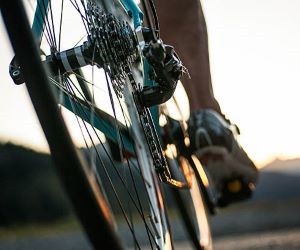Learn how to deal with punctures on long rides with prevention tips, repair techniques, and smart gear choices to keep rolling without stress.
HOW CAN I AVOID BURNOUT IN CYCLING?
Cycling burnout can derail even the most dedicated riders. Whether you're a weekend warrior or a competitive cyclist, learning to balance effort and recovery is essential. This article breaks down how to recognize early warning signs of burnout, practical ways to prevent it, and methods to rebuild motivation and performance. Avoid the crash-and-burn cycle with smart planning, recovery strategies, and a refreshed mental approach that makes cycling sustainable and rewarding long-term.

Understand the signs of cycling burnout
Burnout in cycling doesn’t just appear overnight. It's a gradual process driven by physical overexertion, mental fatigue, or lack of balance between training and recovery. Recognizing the early symptoms can be the key to stopping burnout before it disrupts your routine or love for the sport.
Physical and emotional symptoms
Common symptoms of burnout include persistent fatigue even after rest days, a drop in performance, sleep disturbances, irritability, and a general sense of dread before rides. If your body feels heavy during rides or you start dreading what you once enjoyed, you may be entering burnout territory.
Loss of motivation for scheduled rides
Consistent underperformance despite training
Mood swings and mental fogginess
Unusual aches or prolonged soreness
Feeling overwhelmed by routine sessions
Being attuned to these indicators allows for early intervention. Many cyclists ignore these signs until a performance plateau becomes a full-blown crash. Awareness is the first safeguard.
Build a smarter training plan
The best defense against burnout is a proactive and periodized training plan. Training should be hard—but not relentless. Strategic rest and variety keep your body fresh and your mind engaged.
Balance, rest, and periodization
Too many cyclists believe more mileage equals more gains. In reality, it's about smart intensity distribution and knowing when to back off. Incorporate base training phases, peak phases, and taper periods to allow proper physiological adaptations without overloading your system.
High-performance cyclists often follow a 3:1 training-to-recovery ratio—three weeks of structured training followed by one week of reduced volume and intensity. Include recovery rides, cross-training, and occasional off-bike days to avoid both muscular and mental fatigue.
Introduce low-intensity rides for recovery
Plan rest weeks every 3–4 weeks
Vary terrain and cadence to reduce repetition
Add strength training or yoga on off-bike days
Track HRV and RPE to avoid overtraining
Most importantly, listen to your body. Metrics like heart rate variability (HRV), resting heart rate, and Rate of Perceived Exertion (RPE) can help detect subtle signs of overreaching. Your training plan should be a living document—not a punishment schedule.
Reignite your mindset and motivation
Burnout isn’t always physical. Mental fatigue is a silent killer of long-term cycling motivation. Rebuilding your mindset can reawaken your passion and redefine your relationship with riding.
Reconnect with your ‘why’
When cycling starts to feel like a chore, revisit why you started. Whether it was fitness, freedom, or competition, reconnecting with your core motivations can be a powerful reset. Take time to set non-performance goals like exploring new routes, riding with friends, or joining community events.
If necessary, take a short break from structured training. Focus on fun rides, gravel detours, or even a week completely off the bike. The absence of pressure can often rekindle joy.
Set small, non-competitive challenges
Try a new discipline (e.g., MTB or gravel)
Journal or reflect post-ride to track positivity
Join group rides to rediscover camaraderie
Work with a coach or mental skills expert
Remember, even elite athletes take mental resets. Protecting your headspace is as vital as fueling your muscles. A healthy cycling journey requires alignment of body and mindset.
YOU MAY ALSO BE INTERESTED






